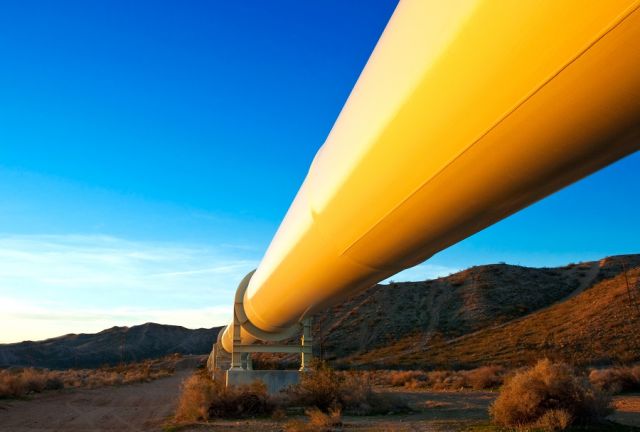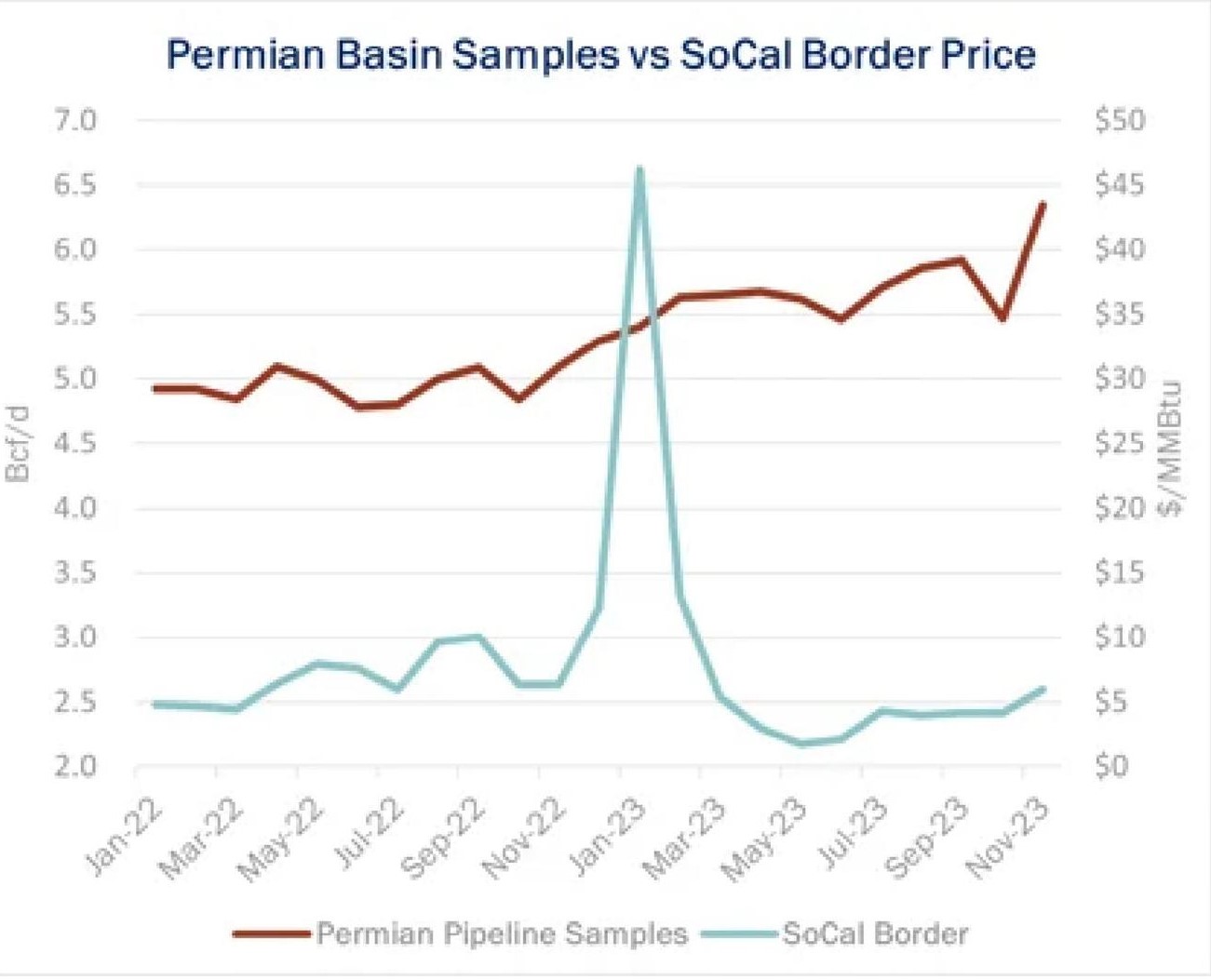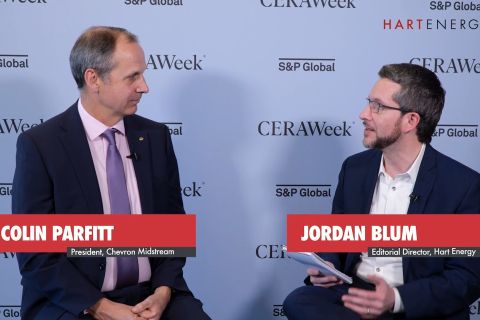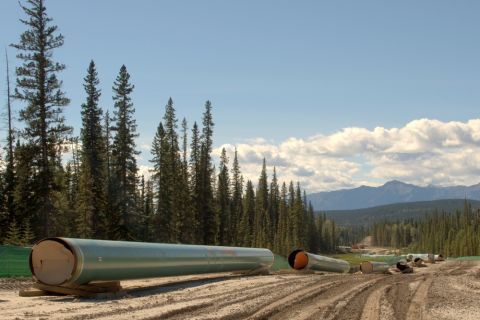
The increased flows may also reflect that E&Ps are ramping up their natural gas production in anticipation of more pipeline infrastructure coming online. (Source: Shutterstock)
While two significant pipeline project completions opened about 1 Bcf/d of natural gas capacity from the Permian basin to the Gulf Coast, demand from the West Coast pushed the area’s interstate flows to a new high in November, according to a report from East Daley Analytics (EDA).
James Taylor, a senior energy analyst at EDA, reported that gas sample receipts from interstate pipelines in the Permian Basin averaged 6.3 Bcf/d in November. The number was a 3.4% increase from October, according to the samples that East Daley tracked. Pipeline sampling allows monitoring of pipeline flow, pressure and gas content.
The average was the highest monthly total the company has tracked back to 2019 and reflected an increase in Permian natural gas production as well as a surge in demand from California.
“Gains on pipelines delivering to California and the Southwest region drove most of the gains in November,” Taylor said. Kinder Morgan’s El Paso Natural Gas system was one of the lines that hit a November record. The larger natural gas shipments to the west are helping to keep Southern California border prices down.
Last winter, natural gas prices reached more than $45 per MMBtu at the Southern California border, thanks to an unusually cold winter and a supply shortage caused by an 18-month shutdown of Kinder Morgan’s El Paso Natural Gas’ Line 2000. On Dec. 8, the price was at $2.90/MMBtu, according to the U.S. Energy Information Administration (EIA).
In November, East Daley said the flows on the El Paso Pipeline averaged 2.4 Bcf/d, up 10% against the average from the previous four months. Month-over-month shipments on Energy Transfer’s Transwestern Pipeline were also up.

The increased flows may also reflect that E&Ps are ramping up their natural gas production in anticipation of more pipeline infrastructure coming online, Taylor said. Therefore, interstate flows hit a high as intrastate capacity was about to be added.
On Dec. 1, Kinder Morgan’s 550 MMbcf/d expansion of its Permian Highway Pipeline went online, bringing its total capacity to 2.65 Bcf/d. The company added more compression to increase capacity on the line, which flows from the Waha Hub in Pecos County to Katy, Texas. In September, MPLX announced completion of its 500 MMbcf/d expansion on the Whistler Pipeline, which flows from the Waha Hub to terminals around Corpus Christi, Texas.
Total natural gas production in the Permian Basin hit an average daily high of 21 Bcf/d in 2022, according to the EIA. The federal agency forecasts that the basin will set a new high in 2023.
Recommended Reading
Exclusive: Chevron Balancing Low Carbon Intensity, Global Oil, Gas Needs
2024-03-28 - Colin Parfitt, president of midstream at Chevron, discusses how the company continues to grow its traditional oil and gas business while focusing on growing its new energies production, in this Hart Energy Exclusive interview.
Imperial Expects TMX to Tighten Differentials, Raise Heavy Crude Prices
2024-02-06 - Imperial Oil expects the completion of the Trans Mountain Pipeline expansion to tighten WCS and WTI light and heavy oil differentials and boost its access to more lucrative markets in 2024.
Carlson: $17B Chesapeake, Southwestern Merger Leaves Midstream Hanging
2024-02-09 - East Daley Analytics expects the $17 billion Chesapeake and Southwestern merger to shift the risk and reward outlook for several midstream services providers.
Midstream Builds in a Bearish Market
2024-03-11 - Midstream companies are sticking to long term plans for an expanded customer base, despite low gas prices, high storage levels and an uncertain political LNG future.
Exclusive: Renewables Won't Promise Affordable Security without NatGas
2024-03-25 - Greg Ebel, president and CEO of midstream company Enbridge, says renewables needs backing from natural gas to create a "nice foundation" for affordable and sustainable industrial growth, in this Hart Energy Exclusive interview.





